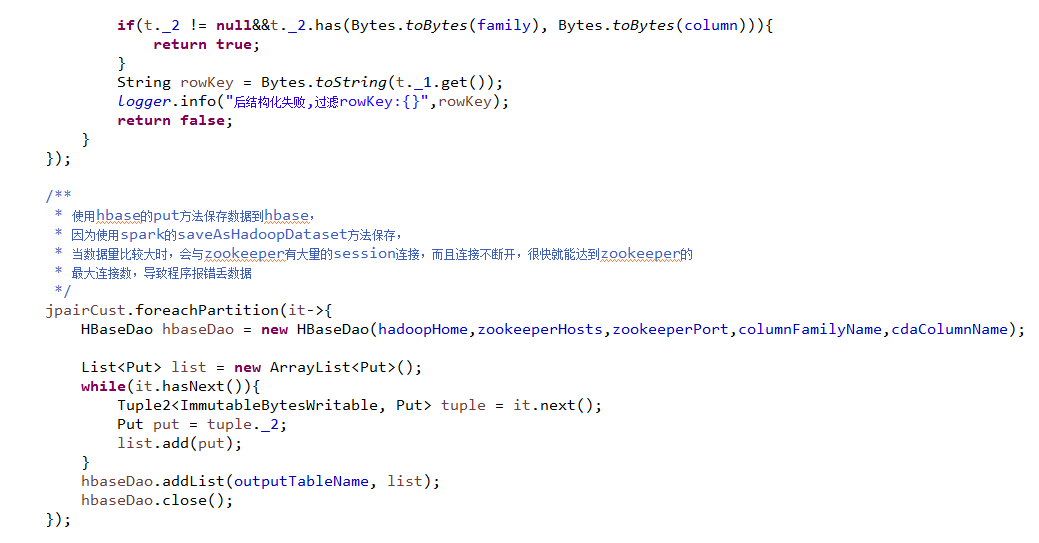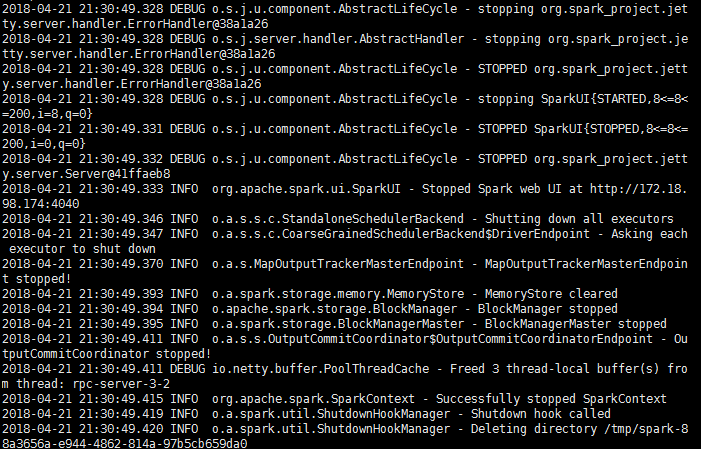程序大概就是通过spark读取hbase中的数据,对数据进行处理以后,将处理后的数据存到hbase的另一张表中
但是在Executor的日志中有报错,但是Driver里面没有,大家看看是什么原因
错误信息:
8/04/21 21:30:49 INFO ZooKeeper: Session: 0x161cfd1f3362a1b closed
18/04/21 21:30:49 INFO ClientCnxn: EventThread shut down
18/04/21 21:30:49 INFO SparkHadoopMapRedUtil: No need to commit output of task because needsTaskCommit=false: attempt_20180421213012_0000_m_000000_0
18/04/21 21:30:49 INFO Executor: Finished task 0.0 in stage 0.0 (TID 0). 1734 bytes result sent to driver
18/04/21 21:30:49 INFO CoarseGrainedExecutorBackend: Driver commanded a shutdown
18/04/21 21:30:49 ERROR CoarseGrainedExecutorBackend: RECEIVED SIGNAL TERM
代码如下:


Driver日志:

Executor日志:

 发帖
发帖 与我相关
与我相关 我的任务
我的任务 分享
分享


